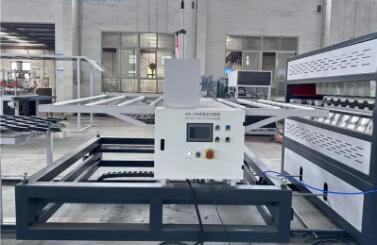Unraveling the Essential Role of Injection Molding Screws in Manufacturing
2024-03-04
Introduction:
Injection molding is a widely used manufacturing process for producing plastic parts and components with precision and efficiency. At the heart of this process lies the injection molding screw, a critical component that plays a pivotal role in melting, mixing, and injecting molten plastic into molds. In this blog, we'll explore the indispensable role of injection molding screws in the manufacturing process and delve into the design principles that govern their functionality.
The Role of Injection Molding Screws:
Injection molding screws are central to the injection molding process, serving multiple functions that are essential for producing high-quality plastic parts. Some key roles of injection molding screws include:
1. Melting and Mixing:
- The primary function of the injection molding screw is to melt and mix the raw plastic resin pellets or granules. As the plastic material is fed into the barrel of the injection molding machine, the rotating screw applies heat and pressure to melt the resin while simultaneously mixing it to ensure uniform consistency.
2. Metering and Injection:
- Once the plastic material is molten and homogenized, the injection molding screw acts as a metering device to precisely control the amount of molten plastic injected into the mold cavity. The screw's rotation and forward movement deliver a predetermined volume of molten plastic under pressure, ensuring accurate filling of the mold.
3. Pressure Build-Up and Compression:
- Injection molding screws are designed to build up pressure within the barrel, compressing the molten plastic to achieve optimal flow and packing within the mold cavity. This pressure ensures that the plastic material fills the mold completely, resulting in parts with consistent dimensions and properties.
4. Cooling and Solidification:
- After the mold cavity is filled with molten plastic, the injection molding screw retracts, allowing the plastic to cool and solidify within the mold. The screw's precise control over the injection process ensures that the cooling cycle proceeds smoothly, minimizing cycle times and maximizing production efficiency.
Design Principles of Injection Molding Screws:
The design of injection molding screws is carefully engineered to optimize performance and efficiency in the injection molding process. Some key design considerations include:
1. Length-to-Diameter Ratio:
- The length-to-diameter ratio of the injection molding screw affects its melting and mixing capabilities. Longer screws provide increased residence time for melting and homogenizing the plastic material, while shorter screws may be suitable for faster cycles or specialized applications.
2. Flight Configuration and Pitch:
- The flight configuration and pitch of the screw determine its ability to convey, mix, and compress the molten plastic. Different flight geometries, such as barrier flights, mixing flights, and compression flights, are tailored to specific processing requirements and material properties.
3. Compression Ratio:
- The compression ratio of the screw refers to the ratio of the feed zone diameter to the metering zone diameter. This parameter influences the degree of compression and pressure build-up within the barrel, affecting melt quality, injection pressure, and part properties.
4. Material and Coating Selection:
- Injection molding screws are typically made from high-strength, wear-resistant materials such as tool steel or bimetallic alloys to withstand the harsh operating conditions of the injection molding process. Surface coatings or treatments may be applied to enhance wear resistance and reduce friction.
Conclusion:
Injection molding screws are indispensable components of the injection molding process, driving the melting, mixing, metering, and injection of molten plastic to produce high-quality plastic parts. Through careful design and engineering, injection molding screws are tailored to meet the specific processing requirements of different materials and applications, ensuring efficient and reliable production of plastic components across a wide range of industries. As injection molding technology continues to advance, the role of injection molding screws remains paramount in achieving precision, consistency, and cost-effectiveness in plastic manufacturing processes.



